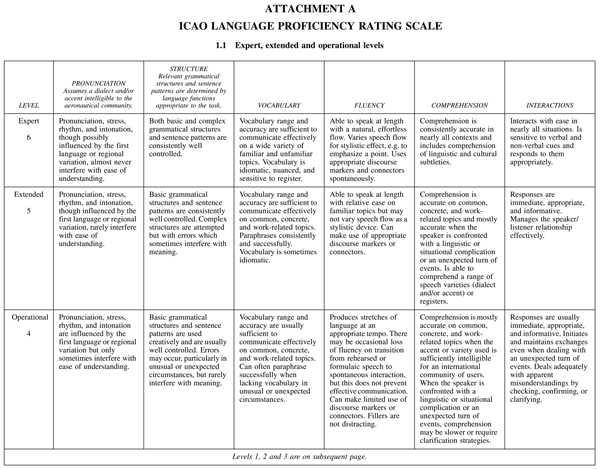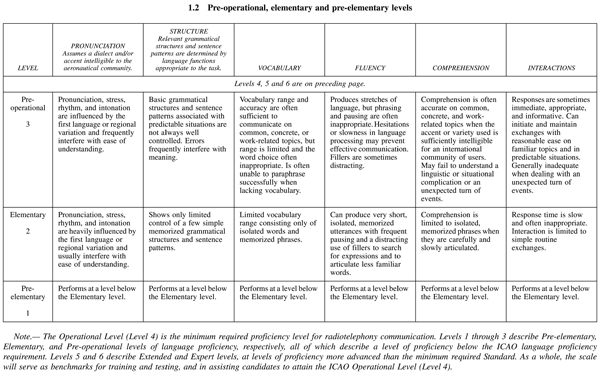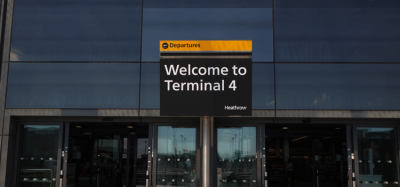ICAO language proficiency requirements
Posted: 30 May 2008 | Mrs Nicole Barrette-Sabourin, Project Manager for Language Proficiency Requirements, ICAO | No comments yet
On 5 March 2008, new ICAO language proficiency requirements came into effect for pilots and air traffic controllers involved in international flight operations. They deal with the ability to speak and understand the language used for radiotelephony communications at Operational Level 4. At the ICAO Assembly in September 2007, a number of ICAO Member States indicated that they would be ready to implement the new regulations while others said they would require more time to ensure full compliance. This timely progress report reviews the evolution of the new language proficiency regulations and the guidance provided by ICAO to facilitate the process.
On 5 March 2008, new ICAO language proficiency requirements came into effect for pilots and air traffic controllers involved in international flight operations. They deal with the ability to speak and understand the language used for radiotelephony communications at Operational Level 4. At the ICAO Assembly in September 2007, a number of ICAO Member States indicated that they would be ready to implement the new regulations while others said they would require more time to ensure full compliance. This timely progress report reviews the evolution of the new language proficiency regulations and the guidance provided by ICAO to facilitate the process.
Safety First
Language proficiency is critically important to aviation safety. This was dramatised in 1996 when 349 passengers and crew members lost their lives in a mid-air collision, where lack of English language proficiency was identified as a key contributing factor. The accident crystallised the need to accelerate the formulation of language proficiency requirements.
Up to the 1990s, the focus in ICAO had been on developing and expanding standardised phraseology. The emphasis gradually shifted to strengthening the use of standardised phraseology, clarifying the use of the English language and establishing levels of proficiency. The objective was to help flight crews and air traffic controllers handle unexpected situations when standardised phraseology was not sufficient.
One milestone was a resolution adopted at the ICAO Assembly in 1998; in which member states had to take “steps to ensure that air traffic controllers and flight crews involved in flight operations, in airspace where the use of the English language is required, are proficient in conducting and comprehending radiotelephony communications in the English language.”
At the 2001 Assembly, member states requested that language proficiency requirements being developed should not be limited to English but to all languages used in radiotelephony communications in international operations.
In March 2003, new language provisions were formally adopted, to become applicable on 5 March 2008. Related Annexes to the Chicago Convention were modified accordingly, including Annex 10, Aeronautical Telecommunications, where the use of the English language is specified. It now states that ‘‘the air-ground radiotelephony communications shall be conducted in the language normally used by the station on the ground or in the English language’’ and ‘‘the English language shall be available, on request from any aircraft station, at all stations on the ground serving designated airports and routes used by international air services’’.
Annex 1, Personnel Licensing, for its part stipulates that the language proficiency requirements apply to pilots, air traffic controllers and aeronautical station operators involved in international operations and that they should, amongst other things, demonstrate this ability to speak and understand the language used in radiotelephony (RT) communication to the ICAO Operational level 4.
Recognising that some states would not be able to meet the applicability date, the 36th Session of the Assembly in September last year urged members states to accept in to their airspace (until 5 March 2011), pilots from other states that are not in a position to comply with the language proficiency requirements by 5 March 2008. This is provided that the States that issued or rendered valid the licenses, post on the ICAO Flight Safety Exchange FSIX their language proficiency implementation plans.
In addition, the Assembly also urged contracting states not to restrict their operators, conducting commercial or general aviation operations, from entering the airspace of other contracting states where air traffic controllers or radio station operators do not yet meet the language proficiency requirements until 5 March 2011, again provided that those states post their language proficiency implementation plans.
The plans are to describe the steps taken to achieve compliance with the language proficiency requirement by March 2011 and the interim measures in place to mitigate risk, as required, for pilots, air traffic controllers and aeronautical station operators involved in international operations.
Where we are now
To date, out of 190 contracting states, 44 have indicated that they are compliant with the language proficiency requirements, while 86 have filed an implementation plan in part or in full. Clearly much work remains to be done in order to achieve full compliance by March 2011.
ICAO began facilitating the implementation process well before the applicability date, including eight workshops conducted from December 2007 until early March 2008, in which 488 participants from 102 States took part.
ICAO has also developed guidance material to support the implementation process, including a manual on the ‘Implementation of Language Proficiency Requirements’ (Doc. 9835) and a CD containing speech samples of level 3, 4 and 5 speakers, as well as a detailed rating for each. The FSIX Implementation of language proficiency requirements page on the Organisation’s website (www.icao.int/fsix/lp.cfm) provides guidelines on the development of implementation plans and contains implementation plans submitted by states. The ‘Frequently Asked Questions’ under the Flight Safety Section, Personnel Licensing contains a full explanation of the requirements and related issues.
An ICAO circular on ‘Globally Harmonised Testing Criteria’ will be published shortly. Its objective is to provide licensing authorities, operators and air navigation service providers with tools to develop and/or assess language testing services. The second edition of Doc. 9835 is also planned to integrate updated information.
In addition, a number of symposia, regional seminars and workshops were held from 2004 to 2007 to sensitise states and interested stakeholders to the new requirements and to assist in the application of the provisions. Still more activities are planned to help all stakeholders cooperate in meeting the 2011 deadline.
Meeting the growth challenge
In April, ICAO published its analysis of preliminary information provided by member states regarding aviation safety and security in 2007. It showed a slight decrease in the number of fatal aircraft accidents and in the overall accident rate for scheduled operations.
Specifically, there were 11 accidents with 587 passenger fatalities on scheduled air services worldwide for aircraft with a maximum take-off mass of more than 2250 kg, usually seven passengers or more. In 2006, there were 751 passenger fatalities from 12 accidents.
The accident rate for scheduled air services, measured in passenger fatalities per 100 million passenger-kilometres, decreased from approximately 0.019 in 2006 to about 0.014 in 2007. This decline is due to a 21.8% reduction in passenger fatalities coupled with an increase of around 6.6% in total scheduled passenger kilometres performed.
Sustained growth in the future will continue to exert pressure on the safety of the global air transport system. One of the ways the aviation community can contribute to maintaining and improving on the safety record is to ensure the full implementation of the new language proficiency requirements.




About Nicole Barrette-Sabourin
Mrs Nicole Barrette-Sabourin is a Training Officer and the Project Manager for Language Proficiency Requirements issues.
She has been a staff member of ICAO since 1983, worked in the TRAINAIR Central Unit since the inception of the programme in 1988 until 2005 and now belongs to the Aviation Training Policy and Standards Unit in the Flight Safety Section of the Air Navigation Bureau of ICAO. She holds a Master’s Degree in Educational Technology from Concordia University in Montreal, Canada.
She is presently involved in the ICAO endorsed Government Safety Inspector Programme, the ICAO/ACI Airport Management Programme and the IATA Training and Qualification Initiatives. In April 2006, she has served as the Secretary of the Proficiency Requirements in Common English Study Group (PRICE SG) during its fifth meeting, organised the technical work programme of the Second ICAO Aviation Language Symposium conducted in May 2007 and developed and conducted language proficiency implementation plan workshops in the ICAO regions.
Join our free webinar: Transforming Airport Security – Innovation, Impact, and the Passenger Experience
The landscape of airport security is undergoing a profound transformation, driven by evolving threats, technology, and passenger expectations. This webinar focuses on how AtkinsRéalis has been transforming security processes at some of the world’s busiest airports with smarter, more adaptive solutions.
Date: 4 Nov | Time: 14:00 GMT
REGISTER NOW TO SECURE YOUR SPOT
Can’t attend live? No worries – register to receive the recording post-event.

















